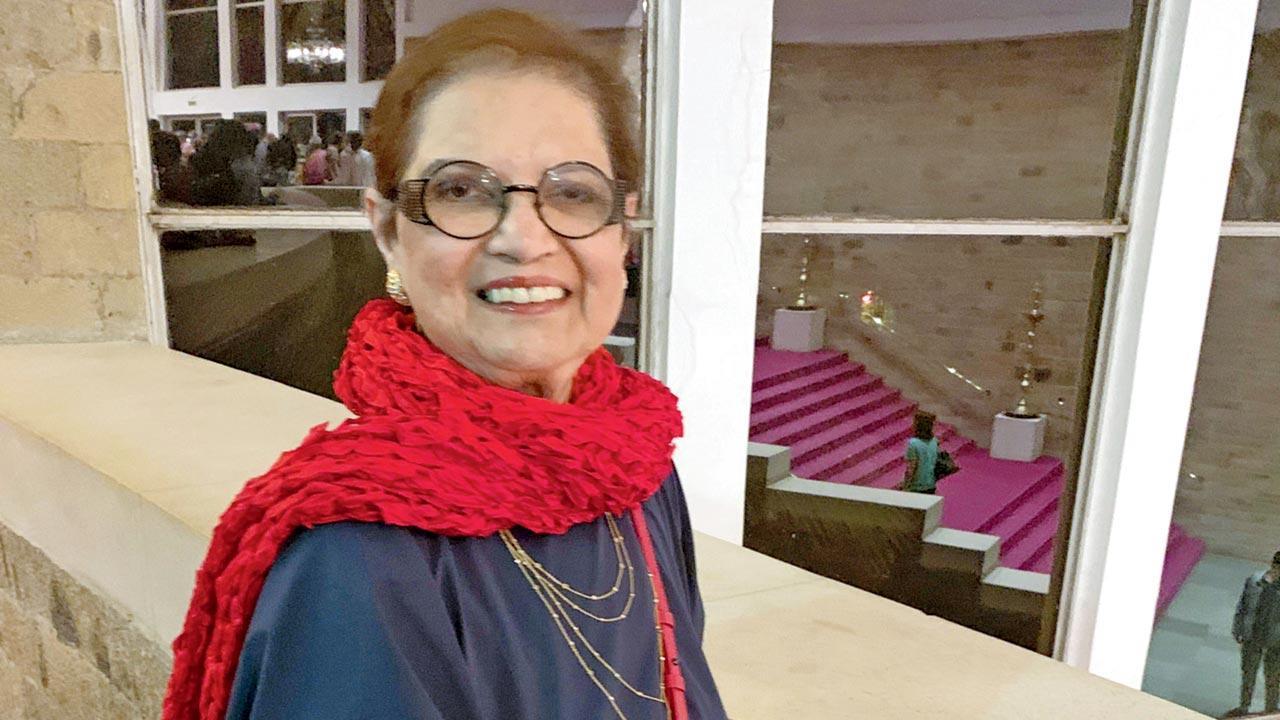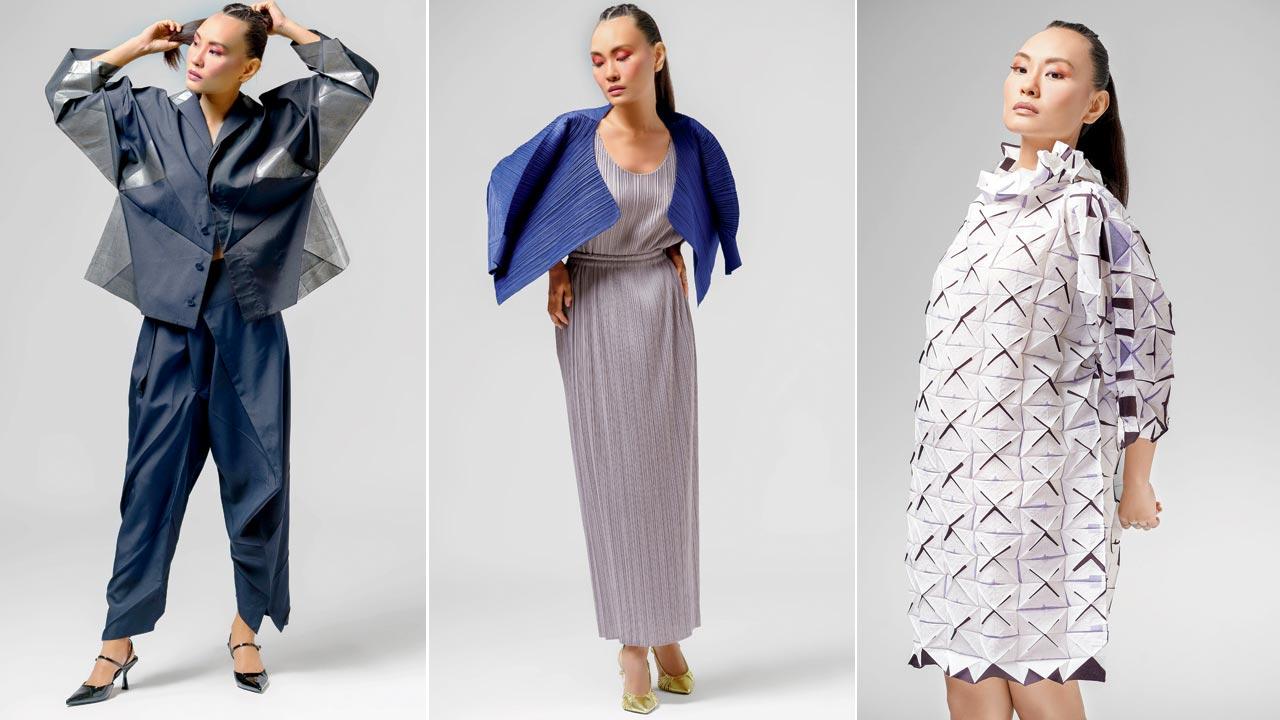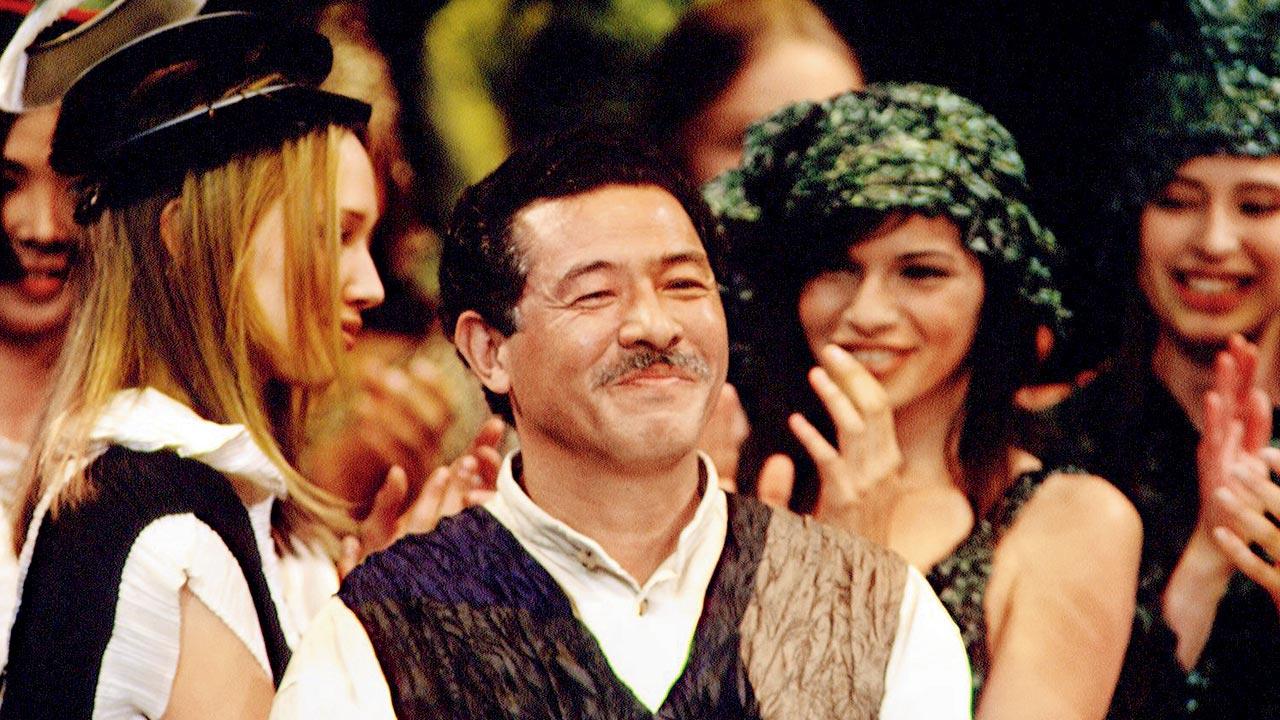A new show at a Girgaum gallery celebrates the enduring influences of one of Japan’s tallest fashion names on an Indian connoisseur who collected and carried off his creations with extraordinary verve

Mina Krishnan carries the Issey Miyake Bao Bao bag considered “the school bag of the creative industries”
 As fashion turns into a popular subject for gallery exhibitions where the designer or craft is in the spotlight as hero and artist, we wonder, what about the women who bought and wore the outfits? Usually they find a passing mention in the corner of a placard, thanking them for donating ensembles. Isn’t her power to make the garment larger than life because she chose to wear and preserve it trumping its value at a time when each new season meant throwing out what belonged to the past, worth celebrating?
As fashion turns into a popular subject for gallery exhibitions where the designer or craft is in the spotlight as hero and artist, we wonder, what about the women who bought and wore the outfits? Usually they find a passing mention in the corner of a placard, thanking them for donating ensembles. Isn’t her power to make the garment larger than life because she chose to wear and preserve it trumping its value at a time when each new season meant throwing out what belonged to the past, worth celebrating?
A new show presented by Baro Market on view at Khotachiwadi’s Gallery 47-A until March 26, pulls one of these women out of the credit note mentions and onto centre- stage. Clothes That Changed The World: Mina Krishnan’s Collection of Issey Miyake, is as much about the enduring influence of the late Japanese designer who passed away last year, as it is a celebration of Krishnan—the art of collecting and a life lived alongside clothes. “This is not a retrospective, nor is it about the serious business of fashion. This is fun. We are looking at it as a celebration of two lives, and the joy they both bring to ours,” says architect Ratan J Batliboi, friend of the Krishnan family and curator of the show.
 Jacket top and trousers from the 132.5 line by Issey Miyake from Mina Krishnan’s collection; Pleats Please ensemble by Issey Miyake from Mina Krishnan’s collection; An Issey Miyake dress from Mina Krishnan’s private collection. All pics/Vikram Bawa
Jacket top and trousers from the 132.5 line by Issey Miyake from Mina Krishnan’s collection; Pleats Please ensemble by Issey Miyake from Mina Krishnan’s collection; An Issey Miyake dress from Mina Krishnan’s private collection. All pics/Vikram Bawa
Mina Krishnan was founder-chairperson of Lotus Learning and a pioneer of Direct Selling in India. Over the years, she assembled an astounding wardrobe of 70-plus Issey Miyake pieces, from her first purchase in the 1980s until 2020. But, as Batliboi describes, it is impossible to talk about Krishnan without talking of her sunshine personality defined by oversized hats, bold and quirky eyeglasses and accessories. “She had an incredible eye. It was not only about Mina wearing Miyake, but also how she adapted and styled the clothes and made them her own. Mina would go for chemotherapy sessions in Miyake, come back, throw her hands up in the air and say, ‘Look at me!’” Batliboi recalls with affection.
Krishnan passed away the same month as Miyake.
 Issey Miyake in a file photo from 1993. Pic/Getty Images
Issey Miyake in a file photo from 1993. Pic/Getty Images
Her husband Mohan and daughter Ayesha decided to make her collection public, entrusting Batliboi with curation. The garments on display at the show are pre-sold to CRY (Child Rights and You), one of India’s trusted child rights organisations. “Krishnan supported the NGO since the time she earned her first big pay cheque,” adds Batliboi, who also serves as board chairman and trustee at the non-profit.
Textile practitioner Hema Shroff Patel recalls Krishnan as someone who was endlessly curious. “I first met Mina in 2018 during a textile show that I organised inspired by the Indus Valley Civilisation. After she passed, I had the privilege of viewing her Miyake collection and thinking to myself how Miyake’s form and function oeuvre complimented Mina’s love for travel and discovery.”
 Ratan J Batliboi, architect and show curator
Ratan J Batliboi, architect and show curator
Choosing Khotachiwadi as the exhibition venue is not coincidental. Krishnan spent her early years close by at Bhatwadi in Girgaum. “As far as the art and design gallery is concerned, it is about Miyake, but the viewer will feel Mina’s personality shine through,” the curator says, adding that he has chosen to display one photograph of Krishnan. Just one? “That’s how much a Miyake show will allow,” smiles Batliboi.
The exhibit hopes to give the viewer a zippy run through Miyake’s most famous, fluid inventions—including the Pleats Please innovation of weightless crease-proof pleats in recycled polyester made from a single piece of cloth, and flat and fold-down 3D line named 132.5. Also on display are pieces from the HaaT line which combines Japanese design with Indian craftsmanship; A-POC (A Piece of Cloth) made from extruded tubular fabrics that wearers could cut out into seamless garments; Bao Bao designs inspired by engineering mesh fabric layered with small triangles of polyvinyl.
At the time of writing this article, the show was yet to be mounted, but it will open, Batliboi assures, with a room dedicated to telling the story of Miyake in chronological order. “We have curated the ensembles such that they will be a visual delight to discover,” he adds. Another room will be dedicated to celebrating Miyake’s wide-ranging influences on graphic design, photography, architecture and food.
It is nearly impossible to talk about the work of Miyake without mentioning the word architectural. “It is his continuous search for new material, form and manufacturing techniques which appeals to an architect’s sensibility. Miyake is my hero,” Batliboi declares while confiding that he does not own a single garment by the designer.
Interestingly, this is not Batliboi’s first brush with fashion. His first job as a 15-year-old was assisting his aunt, eminent fashion producer and choreographer Jeannie Naoroji. “She was the queen of fashion. I started helping with backstage chores and slowly graduated to lighting design and styling. I must have worked on at least 100 fashion shows. I have also collaborated with Astad Deboo as technical director since 1978,” he says of the late pioneer of modern dance in India.
“But I don’t think we are showing fashion here [at the exhibit]. Miyake didn’t disperse opinions or pretensions about couture or how someone should wear his clothes,” Batliboi reasons, invoking Miyake’s mantra: I am most interested in people and the human form. Clothing is the closest thing to all humans.
 Subscribe today by clicking the link and stay updated with the latest news!" Click here!
Subscribe today by clicking the link and stay updated with the latest news!" Click here!










